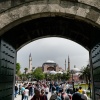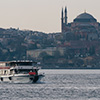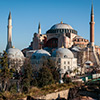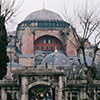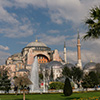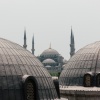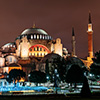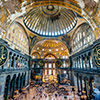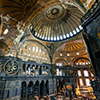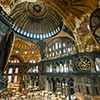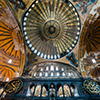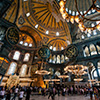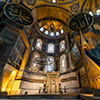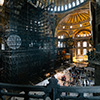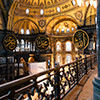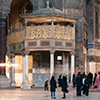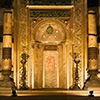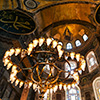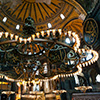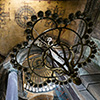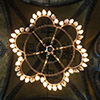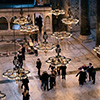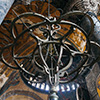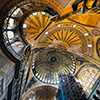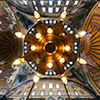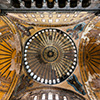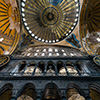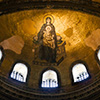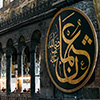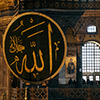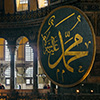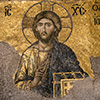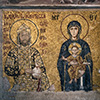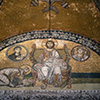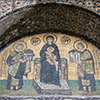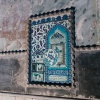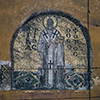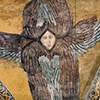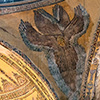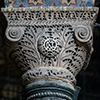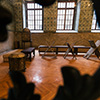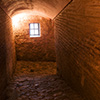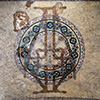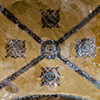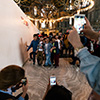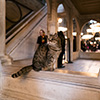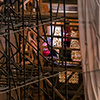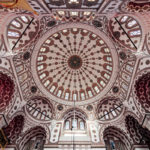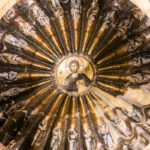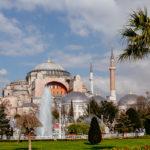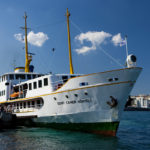Hagia Sophia – The Mosque once being a Church
For more than 1.000 years Hagia Sophia sits where Europe and Asia shake hands. Even today this last of late antiquity’s main churches can still boast with having the largest dome of the world. It served as main and coronation church of old Byzantium and its capital Constantinople, present Istanbul, as well as Ottoman main mosque. Todays Ayasoyfa is a worldwide unique museum as it is showing beside literally breath-taking architecture the chequered history of Christians and Muslims meeting each other.
Istanbul is one of my favourite cities in the world and whenever I visit the old Constantinople then I also have a look at good old Hagia Sophia, of course. It never becomes boring as each time anew the more than 1.400 years old building knows how to impress, with its imposing architecture as well as a tremendously eclectic history. Even more thrilling it is to see the reaction of friends I am taking with me; to see their jaws literally dropping and eyes becoming big when striding into the bombastic main hall through the large wooden entrance doors.
I visit Istanbul regularly since 2007, when I had my journey through the orient and even made it to see pre-war Syria. The time of ten years and its photos also reflects my technical as well as photographical development. Yet I had the honour to experience Hagia Sophia without the de facto omnipresent, large, dark steel scaffolding inside only one time though. I can’t keep those photos away from nobody as they are so special that even the official tourism board of Turkey used them to promote Istanbul and Hagia Sophia with my wide angle capture of the main hall.
Hagia Sophia’s story starts early, as since the year 325, the time of Constantine I., churches are standing at its place. Its two predecessors though were victims of riots and got burned down. Emperor Justinian I. must have been pretty brassed off by that as the giant domed basilica we know today originates from his initial ideas and plans. Different to Berlin in the 21st century and its yet not finished “new” BER airport people in ancient times showed their quality and abilities to finish the giant project giving birth to the most enormous domed building of humanity. That superlativ emerges from the fact of having the largest dome being held by only four columns as the cupola spans 32 mnetres wide.
Istanbul is the world’s only metropolis settling on two continents. The tectonic frontline between Europe and Asia leads right along Hagia Sophia’s doorstep. Of course earthquakes emerged shaking the whole city and causing the giant dome to collapse two times. Founder Justinian I. was still alive when back in the year 562 the new dome construction, a stronger pendentive dome got finished. Only minor changes to its stability were made, hence basically we can eye-witness something dating back to late antiquity.
One can still find evidences of Christianity and Byzantine church inside Hagia Sophia, that is, first and foremost, the stunning architecture but also old mosaics being naturally golden illuminated by sunlight, for example the southwestern entrance mosaic, or Donor mosaic, like the Turkish say. It shows the virgin Mary being framed by Hagia Sophia builder Justinian I. as well as Istanbul’s town founder Constantine I. Not far away from that Jesus Christ hails from the wall as Pantocrator of the Deësis mosaic. Also the four seraphs painted on the column heads short under the dome edge date back to that time. Istanbul even holds another of such early Christian gems: that is the worldwide unique Chora Church.
In 1453 Constantinople fell under Ottoman control. Mehmet II. kept the Hagia Sophia but changed its character by converting it into a Muslim house of God, a mosque. Hence it didn’t take much time and four minarets graced the building outside. Inside the Muslims replaced Christian insignia like crosses with crescents and even removed and destroyed ikons, mosaics as well as the altar. Fortunately some things survived as they got painted or rendered over. Hagia Sophia’s interior also got changed by additions as mosque’s usually need a floor covering carpet, a sultan seat as well as Mihrab and Minbar.
Thanks to Atatürk Hagia Sophia became a museum back in 1934 and people being involved in that second big transformation conceded highest priority to display the building’s history as well as context as continuously and differently used religious site. Maybe those people were a gift from heaven…

